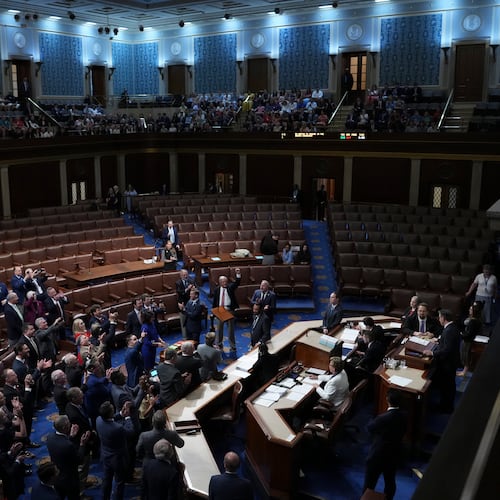Smart people solve problems by addressing them at the root cause. They know that pouring resources into fighting symptoms can be costly, wasteful, and counterproductive.
The U.S. has a problem on its southern border. In the month of March alone, more than 100,000 people were apprehended trying to enter the country, the majority from Guatemala. Many of the migrants suffered unspeakable horrors on the 1,300-mile trek — lack of food, water, and medicine — and, for the women and girls, violations of their bodies.
But we are not approaching this problem in a smart way right now.
Central American migration is taking place because people are fleeing violence, hunger, extreme poverty, and political turmoil — the very things U.S. assistance programs tackle head-on. The U.S. administration is proposing to end more than $300 million in foreign assistance spending in Guatemala, El Salvador and Honduras and simultaneously asking for an emergency allocation of $4.4 billion on top of $8.6 billion for fortifications at our southern border.
To see the situation up close, I recently accompanied three Republican congresswomen on a trip deep into the Western highlands, the border area between Guatemala and Mexico. It’s a region where many of the migrants come from.
We met families suffering separation from loved ones and heard from many individuals who had thought about making the tortuous and uncertain journey to the U.S. themselves. These are people who don’t want to leave their homes, yet feel besieged by the poverty and violence, especially against women, that is rampant in their society.
On the other hand, we also saw inspiring and effective U.S.-supported programs that are making a real difference on the ground to improve peoples’ lives and stabilize Central America.
Consider the youth Savings and Loan project I saw in Solola, Guatemala, which is supported by American foreign assistance dollars. Sixteen young people between the ages of 17 and 24 have saved their own money, lent to each other and built 16 different businesses in agriculture, handicrafts and fashion. Every one of the group’s 65 small loans over three years has been repaid and they have just registered to take on 47 more members, essentially beginning their own co-op bank as a way to create an economic future for each other where none had previously existed.
I also met a woman who, thanks to a CARE program supported by the U.S. government, went from abject and desperate poverty a few years ago to owning 12 agricultural fields today. Through hard work, she leases an additional 17 fields, employs 16 people, and is putting all her children through school. She’s also the founding member of a cooperative of 500 female farmers who grow a variety of produce for local schools and for export. Their export processing facility — which was meticulously clean and organized — employs 150 women and ships $6 million of packaged and cleaned vegetables to the U.S. each year.
As an American taxpayer, it’s right to ask the question: Can we afford these kinds of foreign assistance programs? From what I’ve seen firsthand, the answer is that we cannot afford not to.
Of the federal budget, a mere 0.035% is spent on humanitarian assistance to Central America. This tiny investment pays huge returns in terms of improving peoples’ lives and creating regional stability. And it should be noted that these programs are implemented by local partners working at the community level to reach some of the most vulnerable people. They include strict oversight to ensure money isn’t being diverted away from people in need.
Unfortunately, Guatemala’s problems are not going to disappear overnight. Nearly 60 percent of the country’s 16 million people live on less than $2 per day, half of the children under age 5 are malnourished, and a weak central government cannot effectively control the borders in the face of the powerful drug and human traffickers who use Guatemala as a pit stop on the way to wealthier countries like the U.S. Extreme weather, crop failure, gender-based violence, gang attacks, and lack of employment opportunities can lead people to consider migration as their only option to create a better life for their families.
But the U.S. can help Guatemalans turn things around. We are their largest trading partner and there are 200 American companies operating in Guatemala.
We should restore and increase the U.S. government support that enables nonprofit groups like CARE, Mercy Corps and World Vision to work in remote communities to give Guatemalans hope for a future in their own country. These programs fight violence against women, help indigenous people gain a voice in government decision-making, work with farmers to increase crop yield and nutrition, partner with women and youth to establish savings and loans groups, along with many other activities to improve ordinary peoples’ lives.
We need more of this work, not less.
We must remind our leaders in Washington that addressing the root causes of a problem is the surest way to fix it.
Martha Brooks is Chair of the Board of Directors at CARE, a global humanitarian and development organization based in Atlanta.
About the Author
Keep Reading
The Latest
Featured



